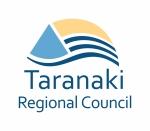Region's farmers dig in for environment
Farming, industry and other regional leaders joined forces in Taranaki today to mark another milestone in a large-scale environmental programme involving millions of plants and thousands of kilometres of streambanks.
Farming leaders, the Taranaki Regional Council and Fonterra representatives and staff rolled up their sleeves and pitched in as more than 1,000 plants go into the ground alongside waterways on a dairy farm near Opunake.
This brings to nearly 1.25 million the number of plantings in an ambitious project to have all of Taranaki’s rivers and streams fenced and planted to protect and enhance water quality. By the end of the project, 17,500 km of streambank will have riparian protection – more than the length of the New Zealand coastline. The project is well under way and is of international scale.
“This is a long-term project and today’s effort marks an increasing focus on getting plants into the ground,” says the Chairman of the Taranaki Regional Council, David MacLeod.
“Already almost 75% of the ring plain’s dairy farms have had riparian management plans drawn up by Council staff working with each farmer. The Council also bulk orders plants and supplies them at cost.
“Now the focus is firmly on putting those riparian plans into action so we can meet the regional targets agreed to under the Dairying and Clean Streams Accord of 2003.”
Taranaki dairy farmer and Fonterra Shareholders Council Chairman, Blue Read, is personally committed to the programme, with his own riparian management plan almost completely implemented.
“Almost half of the region’s streams have riparian protection but there’s a large target ahead,” says Mr Read. “Local farming leaders are committed to this occurring and I am confident farmers will rise to the challenge and take ownership.
“The Taranaki environment is treasured by all who live here and farmers are conscious of the need to protect this special place.”
Fonterra’s General Manager of Sustainable Production, John Hutchings, says Taranaki has made an outstanding progress towards regional targets set by the Dairying and Clean Streams Accord and the environmental benefits have already become clear.
“The consistent progress against targets in the region shows that a partnership between farmers, the industry and the local council is the best approach to improving environmental performance on farm.”
Mr MacLeod says the Taranaki Regional Council has a tradition of environmental achievement through working alongside farmers. But it also has a record of taking enforcement action when necessary. “Farmers are increasingly insisting that poor performers among them are weeded out.”
Water quality in Taranaki is still generally good and in fact has been showing some improvement in recent years because of investments made by the farmers and community. But with cow numbers now nearing 500,000, the riparian project is essential to future-proof the industry.
Riparian management – the fencing and planting of waterways -- is regarded by the Council as a critical strategy in protecting and enhancing water quality in the 300 rivers and streams that flow off Mount Taranaki. As well as keeping stock out of waterways, well-established riparian strips also filter contaminated run-off, provide shade, keep water temperatures down and enhance biodiversity.
The benefits were underscored during the recent dry summer in Taranaki, when stream temperatures and biological stress were noticeably lower in catchments with significant riparian planting.
